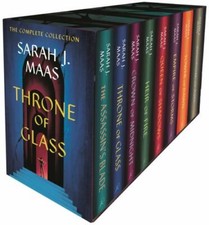Picture 1 of 6

Stock photo






Picture 1 of 6

Stock photo






He Was Wrong by Daniel Birnbaum (2013, Trade Paperback)
M
mdi3557 (53)
100% positive feedback
Price:
$9.99
+ $5.22 shipping
Returns:
Condition:
By many art history accounts, the art of the twentieth century was decided by Pablo Picasso and Marcel Duchamp. So who was right?.
Oops! Looks like we're having trouble connecting to our server.
Refresh your browser window to try again.
About this product
Product Identifiers
PublisherVerlag Der Buchhandlung Walther König
ISBN-103863352270
ISBN-139783863352271
eBay Product ID (ePID)159936110
Product Key Features
Book TitleHe Was Wrong
Number of Pages140 Pages
LanguageEng,Swe
TopicCollections, Catalogs, Exhibitions / Group Shows, Individual Artists / General, Collections, Catalogs, Exhibitions / General
Publication Year2013
IllustratorYes
GenreArt
AuthorDaniel Birnbaum
FormatTrade Paperback
Dimensions
Item Length0.1 in
Item Width6.7 in
Additional Product Features
Dewey Edition23
Number of Volumes2 vols.
Dewey Decimal709.22
SynopsisBy many art history accounts, the art of the twentieth century was decided by Pablo Picasso and Marcel Duchamp. In these versions, Picasso stands for prolific production, a fierce expressionism, endless research of the picture plane and a sense of voracious creativity; whereas Duchamp stands for cerebral brilliance, rejection of optical pleasure and a subtle but all-pervasive conceptual sabotage and irony. (Of course, they shared as many traits, including an appetite for provocation and the recognition of eros as a fundamental, animating life principle.) So who was right? This volume, published for a show at the Moderna Museet in Stockholm, argues for both sides of the coin, looking at various aspects of both oeuvres, including Picasso's fascination with the Minotaur and Duchamp's Rrose Selavy alter ego. The book is appropriately divided in two halves separated by a reverse binding., Two giants, Pablo Picasso and Marcel Duchamp, together for the first time. Picasso, who personified the modernist painter, and Duchamp, the indifferent ironist and chess genius, who challenged painting and transformed art into a maze of intellectual amusements.This catalogue represents a passionate confrontation between what are perhaps the greatest of rivals in 20th century art. Reflecting on the resistance each artist felt towards the other is especially meaningful given that 2012 is the centennial anniversary of the first meeting between Picasso and Duchamp.The contrasts between the two artists are explored, from Picasso's fascination with the Minotaur to Rrose Selavy, Duchamp's feminine alter ego. Before Picasso died in 1973, he had noted, with rising resentment, that other artists were challenging his legacy.Published on the occasion of the exhibition Picasso / Duchamp: "He was wrong" at Moderna Museet, Stockholm, 25 August 2012 3 March 2013.English and Swedish text.
LC Classification NumberN6490
Text byJones, Ronald
All listings for this product
Be the first to write a review





















